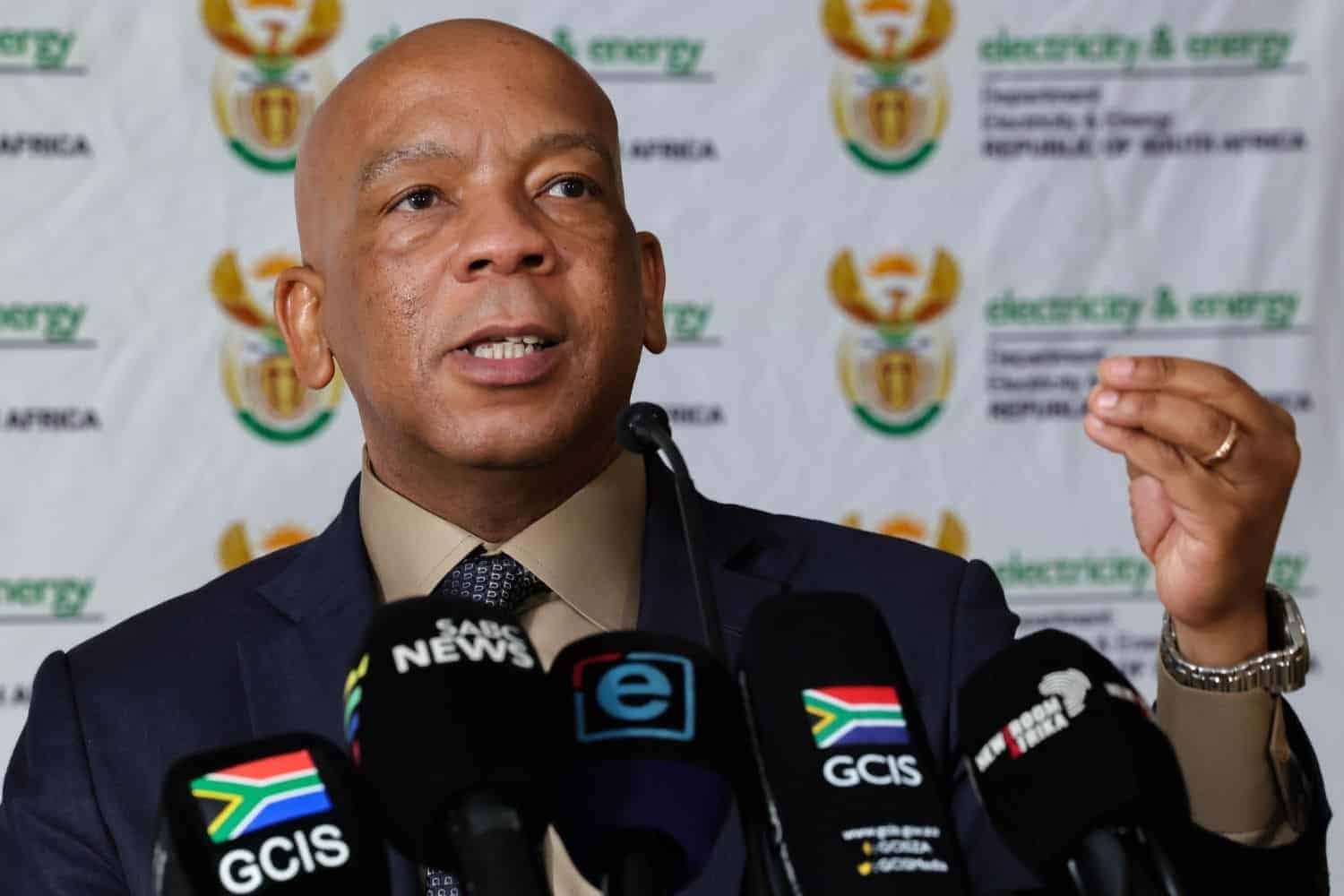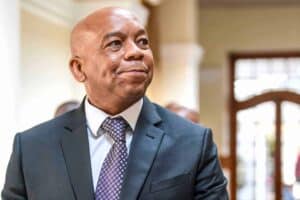Between now and 2039, the government plans to add 105 gigawatts or 105 000 megawatts of new generation capacity.

Minister of Electricity and Energy Dr Kgosientsho Ramokgopa says for the first time in history, the country will witness more electricity generated from clean energy sources than from fossil fuels.
On Sunday, Ramokgopa briefed the media on South Africa’s Integrated Resource Plan (IRP 2025) following its approval by Cabinet on Wednesday, 15 October.
The IRP is the government’s strategy that outlines the allocation of the country’s primary energy resources. This will ensure that the country’s electricity demand is met both sustainably and cost-efficiently.
The plan, projecting until 2042, seeks to ensure the country does not return to full-blown load shedding, and it’s able to secure energy security.
R2.2 trillion investment
The conversion of the primary sources of energy to electricity must also be affordable and available to all, said the minister.
“The size of this investment programme is R2.2 trillion. So if you come to think of it in relative terms, the South African economy is R7 trillion. We are presenting R2.2 trillion of an investment programme. So this constitutes 30 per cent of South Africa’s GDP,” explained Ramokgopa.
The plan seeks to get the economy growing and get people into jobs.
The government has set a target of growing the economy by at least three percentage points by 2030.
However, there is no economy that grows if the lights are off, admitted Ramokgopa.
“There are no industries that will decide to locate in South Africa if we can’t guarantee them electricity that is available, that is of good quality, and that is affordable.
ALSO READ: Eskom will no longer get bailouts from the state, Ramokgopa says
“And for as long as we had had load shedding, industry did not have the confidence to come into the South African economy and make the necessary investments. Even those who had invested in the South African economy have seen capacity utilisation going down.
“As a result of that, they had to resort to laying off people, and that’s why you have the unemployment rate that we are having now. So we are presenting to you not just an electricity programme, but in fact we are responding to an economic question. So we are presenting to the country a R2.2 trillion investment programme, and on the back of this, we are going to industrialise and get people into jobs.”
Coal and emissions
The country’s IRP focuses on hydro, nuclear, wind and solar power.
“Our domestic circumstances mean that we are coal-endowed. So you can’t just relinquish coal as a source of base load, but you also accept that the emissions require attention. And we’ll illustrate to you how we’re able to resolve what appears to be an inherent tension between the exploitation of coal and the reduction of emissions,” he said.
“Our view is that you don’t have a coal problem, you have an emissions problem.”
South Africa is now pursuing a greater energy mix, with the view to move away from fossil fuels.
ALSO READ: Ramokgopa says Eskom in good space despite spending billions on diesel to avoid load shedding
In megawatt terms, 58% of the mix is coal, while 10% of the mix is rooftop PV. We also have solar PV, which is grid-connected, and constitutes another 10%.
Eight per cent of our generation capacity comes from wind, 4.5% from diesel, and then 4% is on pump storage, and 3% is nuclear.
“The remainder, which is about 3%, is a small intervention on hydro, biomass; they are too small for us to accommodate this in the comprehensive picture, but we do acknowledge that they play a role,” said Ramokgopa.
2030 vision
The country plans to introduce about 11 270 megawatts of solar PV between now and 2030.
“And then we are going to add wind. Between now and 2030, we are going to add wind of 7 340 megawatts. If you put it into context, you are talking about 15% of what is installed by Eskom now will be coming from wind just between now and 2030. And then our gas-to-power programme of about 6 000 megawatts,” he said.
“In a nutshell, we are saying the IRP 2025 says between now and 2039, we are going to add 105 gigawatts or 105 000 megawatts of new generation capacity. Let’s put it into context. It means we are going to build Eskom two and a half times between now and 2039. And that’s why we’re making the point that the single biggest investment programme of the post-apartheid era is what we are presenting to the country today.
“For the first time since the recorded history of this country, especially on the production side of electricity, for the first time now we are going to see that the electricity that is generated from clean sources of energy is going to be greater than the fossil fuels.”
Green hydrogen
At the moment, however, the plan does not incorporate green hydrogen as an energy carrier due to insufficient information on its unit cost.
“But the IRP does acknowledge that as a country, we have determined a path of where we want to go in relation to green hydrogen, but we have not incorporated it in the IRP because we are still resolving those questions.
“Once science has helped us to resolve those issues with regard to the unit cost, the kind of investments that have been made and has been able to bring down the unit cost of hydrogen, we’ll incorporate it.”
Ramokgopa on growing population
It is crucial that the country is able to provide electricity to the growing population.
“For as long as we are unable to increase electricity production and ensure that electricity reaches wherever that is in the country and is able to support the industrial growth, per capita consumption comes down.
“We want to ensure that each and every household has access to this electricity, and this electricity is affordable, and we can guarantee it into the future.”
Ramokgopa said, unlike the government that failed to heed the warning of the engineers on electricity supply after democracy, the seventh administration would be proactive.
ALSO READ: ‘Lessons to be learned from Eskom setbacks’: Ramokgopa admits maintenance failures
“We did very little and decided that the market is going to resolve that question. And, of course, now we stand here. We have been experiencing bouts of load shedding, the most intense and sustained in 2023, because we didn’t, in part, take that guidance.
“And now what we are saying is that the current administration has taken that guidance. We are going to be deliberate and intentional in ensuring that we achieve conditions of energy security. And this country will never again be subjected to load shedding.”
Skills
Ramokgopa further conceded that one of the biggest challenges to this investment worth trillions is the skills shortage.
“The skills that are required to support this programme are in short supply. And that’s why we’ll be engaging with the universities and the institutes, especially on the engineering and the built environment and the issues of nuclear.
“The second risk that sits here is that our industry has been decimated. Historically, we’ve had the big five construction companies. I think now we’re only left with one. If we are going to ramp up this build programme in addition to other interventions, we are likely not to have an industry that is positioned to take advantage of these opportunities.”
However, if the government is to secure these skills, it must provide assurance that the projects will be ongoing.
READ NEXT: Ramokgopa wants to expand South Africa’s nuclear programme






